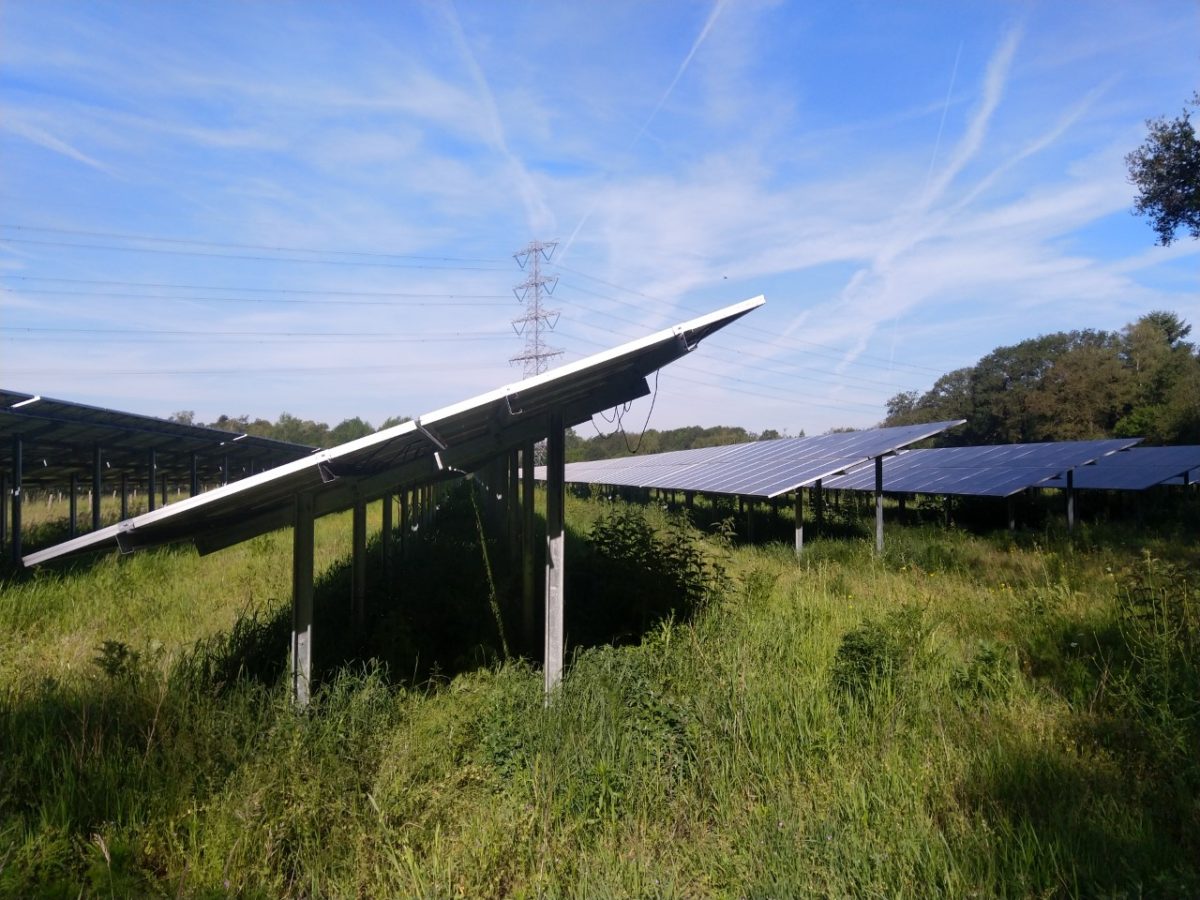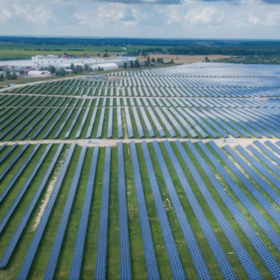From pv magazine International
A group of scientists at Utrecht University, in the Netherlands, has assessed the effects of south-oriented, large scale PV plants on vegetation, soil, and microclimate in 13 solar parks in the Netherlands and has found that a distance between panel rows of at least 1.5 times panel height is crucial to create the best environmental conditions.
“Definitely, some solar panel arrangements are better than others,” Merel Soons, professor of plant dispersal ecology and conservation at Utrecht University, told pv magazine. “Our study only included south-oriented solar panel arrays, which are much better for soil and vegetation than east-west oriented solar panel arrays, where light and water are limiting plant growth and soil functioning.”
The analyzed solar parks are located on greenfield land; conventional grassland; terrain pre-sown with flowery herbs; and terrain sown with grassland species. “For the Netherlands, it is the first time that these impacts were evaluated for a broad range of solar parks with different initial land uses,” Pita A Verweij, associate professor in land use and biodiversity at Utrecht, further explained. “In particular, in intensively used pastures and other low-biodiversity starting conditions, we found a biodiversity gain. Initial land use, therefore, matters.”
The two scientists recommend a distance between panel rows of at least 1.5 times panel height. “This would be enough [to leave] sufficient space for vegetation to develop naturally in between panel arrays,” Verweij also stated. “Rather than a lack of moisture or rainfall, the limiting factor for plant growth appeared to be light.”
In the study, the Dutch group explained that the vegetation cover, the species richness, and the Shannon diversity – which characterizes species diversity in a community – were reduced, compared to solar parks’ surrounding areas. It also found that daytime temperatures and temperature fluctuations were lower under the PV modules, and that soil and air moisture levels were higher, compared to the surrounding areas.
The academics also found the species richness and Shannon diversity were reduced on the northern side of the solar panels and vegetation was taller, with a higher vegetation cover, which they linked to higher soil moisture. “South of panel arrays, vegetation and soil parameters were comparable to the control situation without solar panels,” they emphasized.
They also ascertained that lower species richness was strongly dependent on previous land use and was highest in parks with high initial biodiversity value. “It is therefore advised to avoid such areas in solar park allocation,” they highlighted. “By contrast, our findings suggest that enhancement of biodiversity is possible by planning solar parks in areas with low initial biodiversity value, and proper solar park design and management.
In August, the Netherlands Organization for Applied Scientific Research (TNO) presented a new approach for building east-west oriented solar parks, which it claimed can prevent soil deterioration and offer the same yield as south-oriented PV plants.
This content is protected by copyright and may not be reused. If you want to cooperate with us and would like to reuse some of our content, please contact: editors@pv-magazine.com.









By submitting this form you agree to pv magazine using your data for the purposes of publishing your comment.
Your personal data will only be disclosed or otherwise transmitted to third parties for the purposes of spam filtering or if this is necessary for technical maintenance of the website. Any other transfer to third parties will not take place unless this is justified on the basis of applicable data protection regulations or if pv magazine is legally obliged to do so.
You may revoke this consent at any time with effect for the future, in which case your personal data will be deleted immediately. Otherwise, your data will be deleted if pv magazine has processed your request or the purpose of data storage is fulfilled.
Further information on data privacy can be found in our Data Protection Policy.